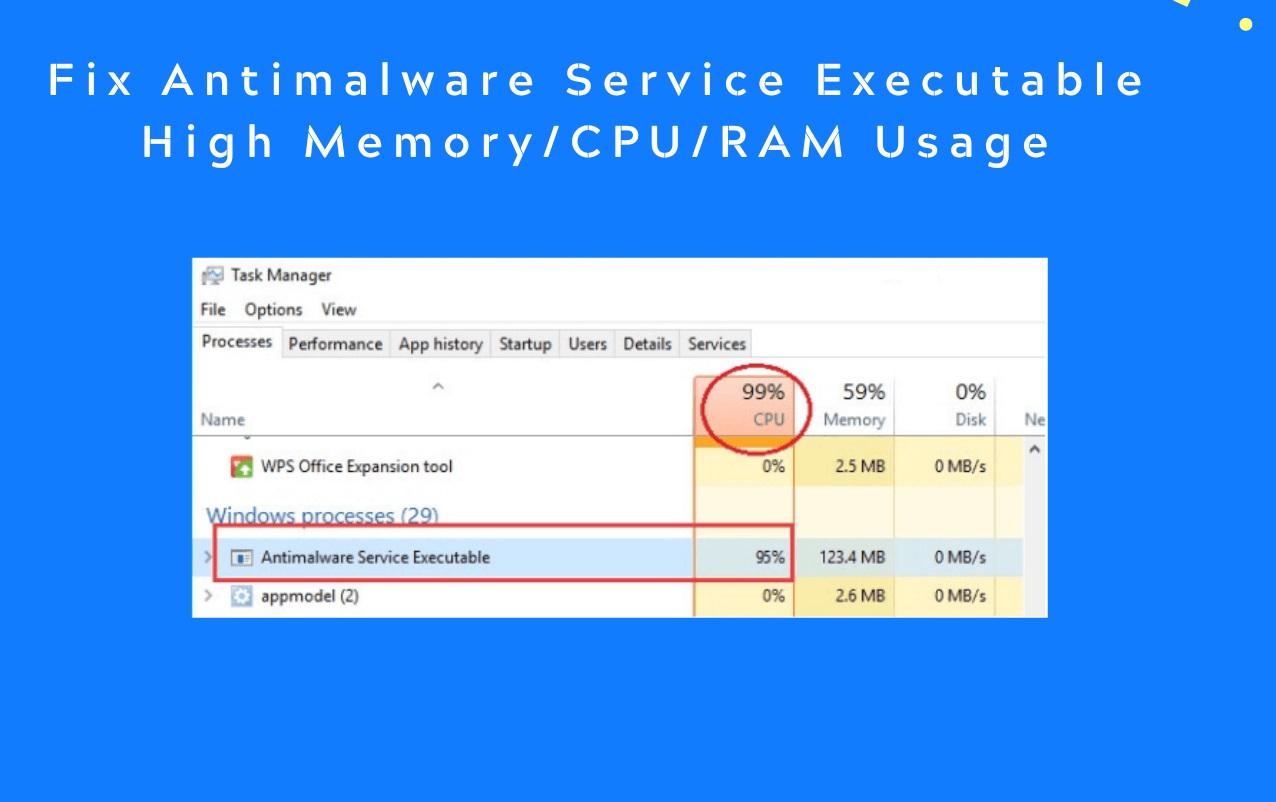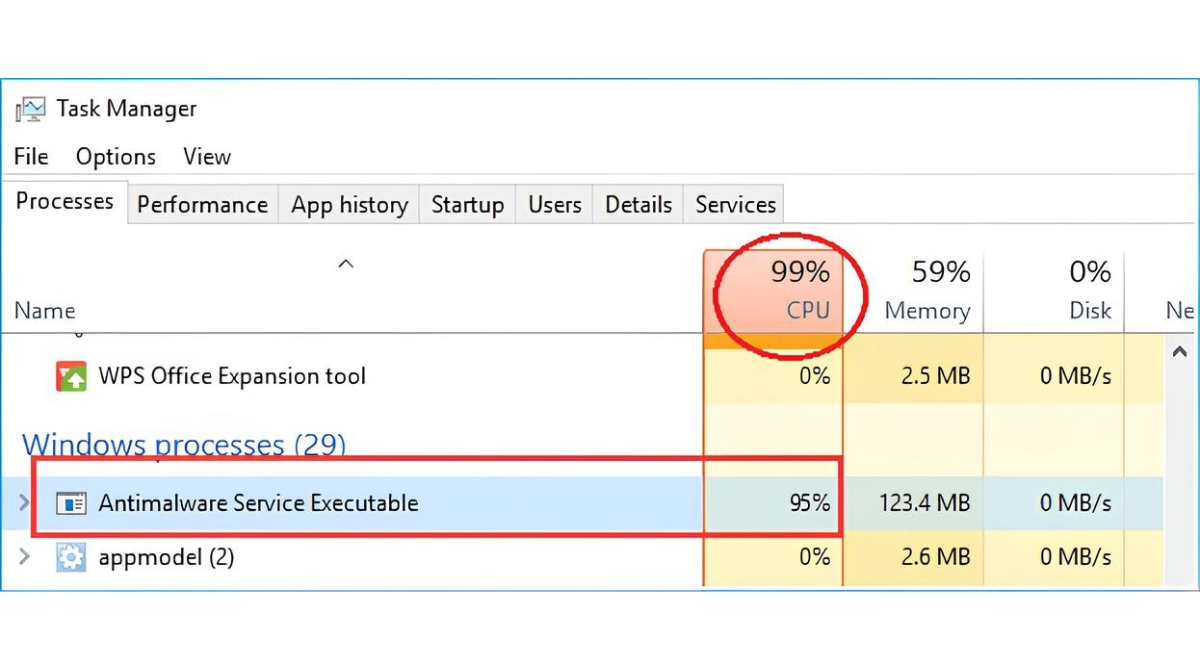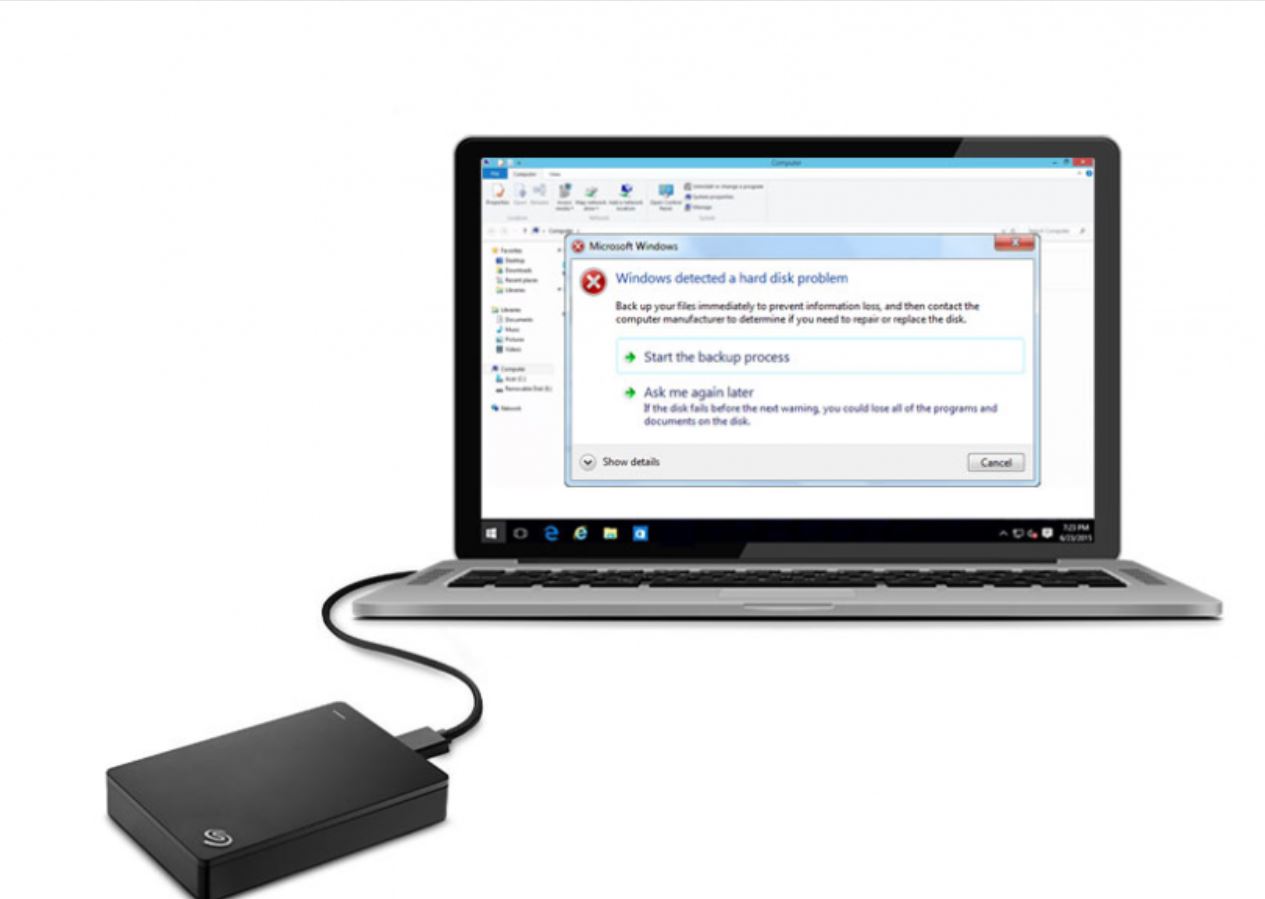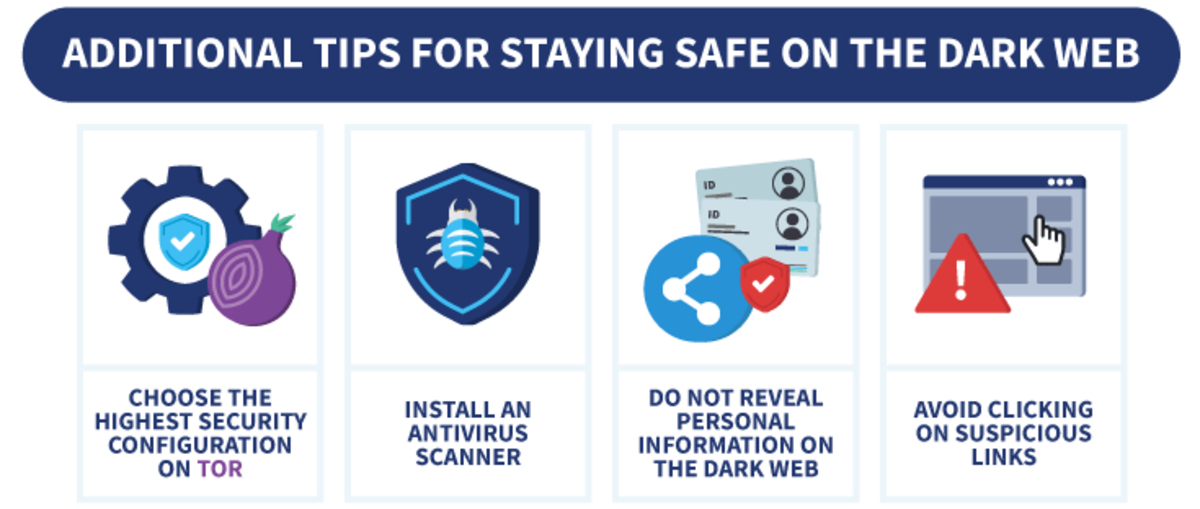Introduction
The Antimalware Service Executable (MsMpEng.exe) is a vital component of Windows Defender, the built-in antivirus software for Windows operating systems. It is responsible for real-time scanning, file and network activity monitoring, and malware detection and removal. While its main purpose is to ensure the security of your computer, you may have noticed that the Antimalware Service Executable occasionally consumes a significant amount of CPU resources, causing your system to slow down or become unresponsive. In this article, we will explore the reasons behind this high CPU usage and provide solutions to alleviate the issue.
When the Antimalware Service Executable is using a high percentage of CPU resources, it indicates that your system’s performance may be impacted, resulting in sluggishness and decreased productivity. Understanding why this occurs can help you take appropriate steps to minimize its impact on your computer’s performance.
In the following sections, we will delve into the possible reasons for the high CPU usage of the Antimalware Service Executable. These reasons include insufficient system resources, real-time protection scanning, scheduled scanning, conflict with other security software, and scanning a large number of files or folders. By identifying the underlying cause, you can adopt effective strategies to reduce the CPU usage and improve your system’s performance.
What is Antimalware Service Executable?
The Antimalware Service Executable (MsMpEng.exe) is a core process of the Windows Defender security solution that comes bundled with Windows operating systems. It is responsible for various security tasks, including real-time scanning, malware detection and removal, and network activity monitoring. The Antimalware Service Executable works in the background to ensure that your computer remains protected from malicious software and potential threats.
Windows Defender, along with its Antimalware Service Executable component, acts as a built-in antivirus and antimalware solution for Windows. It provides an essential layer of protection against viruses, ransomware, spyware, and other malicious programs that could compromise the security and functionality of your system. By constantly monitoring files, processes, and network activity, the Antimalware Service Executable helps safeguard your personal and sensitive data from unauthorized access or damage.
The Antimalware Service Executable is designed to work seamlessly in the background, without causing any interruption or inconvenience to your everyday computing tasks. It uses various techniques, such as signature-based scanning, behavior monitoring, and machine learning algorithms, to detect and mitigate potential security threats in real-time. When a suspicious file or activity is detected, the Antimalware Service Executable takes immediate action to block or remove the threat, ensuring your system remains protected at all times.
In addition to its real-time protection capabilities, the Antimalware Service Executable also performs scheduled scanning. This feature allows Windows Defender to periodically scan your system for any potential threats that may have gone undetected during real-time monitoring. Scheduled scanning helps ensure that your computer is thoroughly checked for malware and ensures the overall security and integrity of your system.
Overall, the Antimalware Service Executable is a crucial component of Windows Defender, providing robust security features to protect your computer from various types of malware and security threats. While it operates quietly in the background, it is important to understand the factors that can lead to high CPU usage and explore methods to optimize its performance, which will be discussed in the following sections.
Why is Antimalware Service Executable using high CPU?
Experiencing high CPU usage from the Antimalware Service Executable can be frustrating, as it can significantly impact your computer’s performance. There are several potential factors that contribute to the high CPU usage of this process. Understanding these reasons can help you identify the underlying cause and take appropriate steps to resolve the issue.
1. Insufficient system resources: One common reason for high CPU usage is the lack of available system resources. If your computer is already running multiple resource-intensive applications or processes, the Antimalware Service Executable may struggle to allocate the necessary CPU power, resulting in increased CPU usage.
2. Real-time protection scanning: The Antimalware Service Executable constantly monitors your system in real-time to detect and block potential threats. This scanning process, which includes file and network activity monitoring, can consume a significant amount of CPU resources, especially when scanning large files or numerous files simultaneously.
3. Scheduled scanning: Windows Defender performs scheduled scans to thoroughly check your system for malware. These scans, which are often scheduled during periods of low activity, can contribute to high CPU usage as the Antimalware Service Executable works diligently to scan your files and folders within the specified time frame.
4. Conflict with other security software: If you have installed third-party security software alongside Windows Defender, it can lead to conflicts where both programs try to control and scan for malware simultaneously. This competition for resources can result in higher CPU usage for the Antimalware Service Executable.
5. Large number of files or folders to scan: If you have an extensive file system with a large number of files and folders, the Antimalware Service Executable may take longer to complete the scanning process. This can result in extended periods of high CPU usage as it scans each file and folder individually.
By understanding the underlying causes of the high CPU usage of the Antimalware Service Executable, you can now explore effective strategies to reduce its impact on your system’s performance. The following sections provide solutions and tips to mitigate the high CPU usage and optimize the performance of the Antimalware Service Executable.
Insufficient system resources
One of the reasons why Antimalware Service Executable may use high CPU is the lack of available system resources. If your computer is already running multiple resource-intensive applications or processes, the Antimalware Service Executable may struggle to allocate the necessary CPU power, resulting in increased CPU usage.
To address this issue, it is essential to ensure that your computer has sufficient resources to handle the workload imposed by the Antimalware Service Executable. Here are a few steps you can take:
- Close unnecessary applications: Close any unnecessary applications or background processes that are consuming a significant amount of system resources. This will free up CPU power for the Antimalware Service Executable to use.
- Upgrade your hardware: If your computer is consistently experiencing high CPU usage due to insufficient system resources, consider upgrading your hardware. Adding more RAM or upgrading to a faster processor can significantly improve your system’s performance.
- Optimize startup processes: Disable any unnecessary programs from launching at startup. This will reduce the overall burden on your system and ensure that the Antimalware Service Executable has access to more CPU power.
- Perform regular maintenance: Regularly clean up temporary files, clear browser cache, and run disk defragmentation to optimize your system’s performance. This will help ensure that your computer is running at its best and can allocate resources efficiently.
By addressing the issue of insufficient system resources, you can alleviate the high CPU usage of the Antimalware Service Executable and improve the overall performance of your computer. However, if the high CPU usage persists even after taking these steps, it is recommended to explore other potential causes, which will be discussed in the following sections.
Real-time protection scanning
Another factor that can contribute to the high CPU usage of the Antimalware Service Executable is the real-time protection scanning feature. This feature continuously monitors your system for any suspicious activities or files, conducting real-time scans to detect and block potential malware threats. However, this scanning process can consume a significant amount of CPU resources, especially when scanning large files or numerous files simultaneously.
While real-time protection scanning is vital for ensuring the security of your system, there are a few steps you can take to optimize its performance and reduce CPU usage:
- Adjust real-time scanning settings: Open Windows Defender settings and navigate to the “Virus & threat protection” section. From there, click on “Manage settings” under the “Virus & threat protection settings” section. Consider adjusting the settings to exclude certain file types, folders, or processes that are not likely to be infected. This can reduce the scanning workload and consequently lower CPU usage.
- Limit background scanning: By default, Windows Defender performs background scans while your system is idle. However, you can modify these settings to limit the maximum CPU usage during background scanning. Open Windows Defender settings, select the “Scan options” tab, and choose the “Windows Defender Offline scan” option. Adjust the maximum CPU usage to a level that is acceptable for your system.
- Schedule scans during low activity periods: Windows Defender allows you to schedule scans at specific times. Consider setting the scan schedule during periods of low activity, such as overnight or during lunch breaks. This way, the scanning process will have minimal impact on your regular computer use.
By adjusting the real-time protection scanning settings and scheduling scans appropriately, you can optimize the performance of the Antimalware Service Executable and reduce its CPU usage. However, if the high CPU usage issue persists, it may be necessary to investigate other potential factors, which will be discussed in the following sections.
Scheduled scanning
Scheduled scanning is an important aspect of Windows Defender’s functionality. It allows the Antimalware Service Executable to perform regular scans of your system to detect and eliminate any potential malware threats that may have been missed during real-time protection. However, scheduled scanning can also contribute to high CPU usage, especially when scanning a large number of files or folders within a specified time frame.
To manage the impact of scheduled scanning on CPU usage, consider the following steps:
- Adjust the scan schedule: Open Windows Defender settings and go to the “Virus & threat protection” section. Click on the “Manage settings” link under the “Scan options” section. From there, you can customize the scan schedule according to your preferences. For example, you can change the scan frequency to a less frequent interval or set scans to occur during periods of low computer usage.
- Enable the “Idle time scanning” option: Windows Defender offers an option called “Idle time scanning,” which allows scheduled scans to be performed only when your computer is idle. By enabling this option, the Antimalware Service Executable will conduct the scheduled scan only when your computer is not in active use, minimizing the impact on CPU usage during regular activities.
- Exclude specific files or folders from scheduled scanning: If there are certain files or folders that you know are safe and do not require scanning, you can exclude them from the scheduled scans. This can significantly reduce the number of files that the Antimalware Service Executable needs to scan, thus decreasing CPU usage. This exclusion can be done through the Windows Defender settings.
By adjusting the scan schedule, enabling idle time scanning, and excluding unnecessary files or folders from scheduled scanning, you can effectively manage the CPU usage of the Antimalware Service Executable during scheduled scans. However, if the high CPU usage persists, it is advisable to explore other potential causes, which will be discussed in the following sections.
Conflict with other security software
While Windows Defender is designed to work seamlessly with the Windows operating system, conflicts may arise when it coexists with other third-party security software. These conflicts can lead to increased CPU usage by the Antimalware Service Executable, as both programs may attempt to perform similar tasks simultaneously, such as scanning for malware or monitoring network activity.
To address conflicts with other security software and reduce CPU usage, consider the following steps:
- Uninstall conflicting security software: If you have installed third-party antivirus or antimalware software alongside Windows Defender, it is recommended to uninstall one of them to avoid conflicts. Having multiple security programs can create competition for resources, leading to increased CPU usage. Choose the security software that best meets your needs and remove any conflicting software.
- Disable real-time protection in conflicting software: If you prefer to keep both Windows Defender and another security software installed, you can disable the real-time protection feature in one of the programs. This ensures that only one program is actively scanning and monitoring your system, reducing CPU usage. However, it is important to note that relying solely on one security solution is generally recommended for optimal protection.
- Check for software updates: Ensure that both Windows Defender and any other security software you have installed are up to date. Software updates often include bug fixes and compatibility improvements that can help reduce conflicts and optimize CPU usage. Check the software provider’s website or use the built-in update features to ensure you have the latest versions.
By uninstalling conflicting security software, disabling real-time protection in one of the programs, and keeping both Windows Defender and other software up to date, you can resolve conflicts and minimize CPU usage caused by the Antimalware Service Executable. However, if the high CPU usage persists, it may be necessary to explore other potential factors, which will be discussed in the following sections.
Large number of files or folders to scan
When the Antimalware Service Executable is scanning a large number of files or folders, it can lead to high CPU usage. Scanning each file and folder individually requires significant processing power, especially if there are extensive file systems or network storage locations to be scanned. This can result in prolonged periods of high CPU usage, impacting the overall performance of your system.
To address the high CPU usage caused by a large number of files or folders to scan, consider implementing the following steps:
- Exclude unnecessary files or folders from scanning: Open Windows Defender settings and navigate to the “Virus & threat protection” section. Click on the “Manage settings” link under the “Exclusions” section. Here, you can exclude specific files, folders, or file types from being scanned by the Antimalware Service Executable. By excluding unnecessary files or folders, you can reduce the scanning workload and alleviate CPU usage.
- Organize files and folders effectively: To optimize the scanning process, it is beneficial to organize your files and folders in a structured manner. Group related files together in specific folders, avoiding large and cluttered directories. This allows the Antimalware Service Executable to scan files more efficiently, potentially reducing CPU usage and scan times.
- Use a separate storage location for less critical files: If you have a large number of files that do not require frequent scanning, consider storing them on a separate storage location. This can be an external hard drive or network-attached storage. By doing so, the Antimalware Service Executable can focus on scanning the more critical files on your primary storage, minimizing CPU usage.
By excluding unnecessary files or folders from scanning, organizing your files and folders effectively, and using a separate storage location for less critical files, you can optimize the scanning process and reduce the CPU usage of the Antimalware Service Executable. However, if the high CPU usage issue persists, it may be necessary to investigate other potential causes, which will be discussed in the following sections.
How to reduce Antimalware Service Executable CPU usage?
Experiencing high CPU usage from the Antimalware Service Executable can be frustrating, but there are several steps you can take to reduce its impact on your system’s performance. By implementing the following strategies, you can optimize the CPU usage of the Antimalware Service Executable and improve the overall efficiency of your computer:
- Exclude files and folders from scanning: Windows Defender allows you to exclude specific files, folders, or file types from being scanned by the Antimalware Service Executable. By excluding unnecessary files or folders that do not pose a significant risk, you can reduce the scanning workload and ease the CPU usage. This can be done through the Windows Defender settings by navigating to the “Virus & threat protection” section and accessing the “Manage settings” and “Exclusions” options.
- Adjust scan schedule: Consider modifying the scan schedule of Windows Defender to occur during periods of low computer usage. By scheduling scans at times when you are less likely to be actively using your computer, you can minimize the impact on CPU usage during your regular tasks. Open Windows Defender settings and navigate to the “Virus & threat protection” section to customize the scan schedule.
- Use a different antivirus program: If the high CPU usage of the Antimalware Service Executable persists and is significantly impacting your system’s performance, you may consider using a different antivirus program. There are various third-party antivirus software options available that offer comparable or even enhanced protection while potentially consuming fewer system resources. Research and choose a reputable alternative that aligns with your security needs.
It is important to note that while adjusting settings or switching to a different antivirus program can help reduce the CPU usage of the Antimalware Service Executable, it is crucial to have effective security measures in place to protect your system from malware threats. Ensure that you still have a reliable and up-to-date antivirus solution active on your computer to maintain optimal security.
By following these strategies and exploring the recommended solutions, you can effectively reduce the Antimalware Service Executable’s CPU usage while maintaining a high level of security on your computer. However, if the high CPU usage issue persists or if you have concerns about your system’s performance, it is advisable to seek further assistance from technical support or a knowledgeable professional.
Exclude files and folders from scanning
One effective strategy to reduce the CPU usage of the Antimalware Service Executable is to exclude specific files and folders from being scanned. Windows Defender allows you to customize the scanning process by excluding unnecessary files, folders, or file types that do not pose a significant risk. By doing so, you can minimize the scanning workload and alleviate the CPU usage of the Antimalware Service Executable.
To exclude files and folders from scanning, follow these steps:
- Open Windows Defender settings by clicking on the Windows Start menu and searching for “Windows Security.” Launch the Windows Security app.
- In the Windows Security window, click on “Virus & threat protection” in the left-hand menu.
- Under the Virus & threat protection settings, click on “Manage settings.”
- Scroll down to the Exclusions section and click on “Add or remove exclusions.”
- From here, you have different options to exclude files or folders. You can choose to exclude specific files, folders, file types, or process by clicking on the respective option.
- Follow the prompts to browse and select the files or folders you want to exclude from scanning.
When choosing which files or folders to exclude, it is important to exercise caution and only exclude those that you are confident are safe and do not pose a significant risk. For example, you may want to exclude system files, program files, or specific directories that contain files that are known to be unnecessary for scanning purposes.
By excluding unnecessary files and folders from scanning, you can significantly reduce the scanning workload of the Antimalware Service Executable. This, in turn, helps alleviate the CPU usage and allows your computer to perform more efficiently. However, it is important to remember that excluding certain files or folders from scanning means they will not be checked for malware, so proceed with caution and ensure you have reliable security measures in place.
Regularly review and update your exclusion list as needed. As your system changes and new files are added, it may be necessary to reevaluate your exclusion settings. It is important to strike a balance between optimizing performance and maintaining a high level of security.
By effectively excluding unnecessary files and folders from scanning, you can optimize the CPU usage of the Antimalware Service Executable and enhance the overall performance of your computer. However, if the high CPU usage persists or if you have concerns about your system’s performance, it is advisable to seek further assistance from technical support or a knowledgeable professional.
Adjust scan schedule
One effective way to reduce the CPU usage of the Antimalware Service Executable is by adjusting the scan schedule. By customizing when the scans occur, you can minimize the impact on CPU usage during your regular computer usage and optimize the overall performance of your system.
To adjust the scan schedule in Windows Defender, follow these steps:
- Open the Windows Defender settings by clicking on the Windows Start menu and searching for “Windows Security.” Launch the Windows Security app.
- In the Windows Security window, click on “Virus & threat protection” in the left-hand menu.
- Under the Virus & threat protection settings, click on “Manage settings.”
- Scroll down to the Scan options section and click on “Windows Defender Offline scan” or “Quick scan” or “Full scan.”
- Choose the scan type that you want to adjust the schedule for.
- Click on the “Advanced scan” link to access advanced scanning options.
- Here, you can specify the day and time for the scan to occur. Choose a time when your computer is typically idle or when you are less likely to be actively using it.
- Save the changes, and the scan schedule will be updated accordingly.
By customizing the scan schedule according to your preferences, you can ensure that scans occur at times when they are least likely to interfere with your regular tasks. Performing scans during periods of low activity helps minimize the impact on CPU usage, allowing your computer to run more smoothly.
It is important to strike a balance when adjusting the scan schedule. While you want to optimize CPU usage, it is also crucial to ensure that the system is adequately protected. Scheduled scans play a vital role in detecting and removing potential threats, so avoid setting too infrequent scan intervals. Finding the right balance will depend on your usage patterns and the level of security you require.
Keep in mind that adjusting the scan schedule does not eliminate the need for real-time protection, which actively monitors your system for potential threats. Therefore, it is essential to maintain an up-to-date and reliable antivirus solution to ensure continuous protection against malware.
By adjusting the scan schedule, you can optimize the CPU usage of the Antimalware Service Executable and improve the overall performance of your computer. However, if the high CPU usage persists or if you have concerns about your system’s performance, it is advisable to seek further assistance from technical support or a knowledgeable professional.
Use a different antivirus program
If you continue to experience high CPU usage from the Antimalware Service Executable and the previous solutions haven’t resolved the issue, you may consider using a different antivirus program as an alternative. While Windows Defender provides adequate protection, there are numerous third-party antivirus solutions available that offer comparable or even enhanced security features while potentially consuming fewer system resources.
To use a different antivirus program, follow these steps:
- Research and choose a reputable third-party antivirus program that aligns with your security needs. There are various options available, such as Avast, McAfee, Norton, and Bitdefender.
- Download and install the selected antivirus software by following the instructions provided by the vendor.
- Before installing the new antivirus program, it is recommended to disable Windows Defender to prevent any conflicts. Open Windows Security by clicking on the Windows Start menu and searching for “Windows Security.” In the Windows Security app, go to Virus & threat protection and click on “Manage settings.” Toggle off the real-time protection option.
- Once the new antivirus software is installed, follow its setup and configuration steps to ensure that it provides optimal protection while minimizing CPU usage.
Using a different antivirus program can potentially alleviate the high CPU usage caused by the Antimalware Service Executable, as each antivirus software has its own scanning engine and resource management techniques. By switching to a different antivirus program, you may find a better balance between system performance and security.
When selecting an alternative antivirus program, consider factors such as its reputation, effectiveness in detecting and removing malware, system compatibility, and resource requirements. It is essential to choose a well-established and trusted antivirus provider to ensure the best possible protection for your system.
Keep in mind that disabling Windows Defender means relying solely on the new antivirus program for protection. Therefore, ensure that the chosen antivirus program is up to date, has real-time protection enabled, and includes regular scanning features to safeguard your computer from malware threats.
By using a different antivirus program, you may address the high CPU usage issue caused by the Antimalware Service Executable. However, it is crucial to evaluate the overall performance and effectiveness of the new antivirus software to ensure it meets your security requirements.
If the high CPU usage issue persists or if you have concerns about your system’s performance, it is advisable to seek further assistance from technical support or a knowledgeable professional.
Conclusion
The Antimalware Service Executable (MsMpEng.exe) is an essential component of Windows Defender, responsible for real-time scanning, malware detection and removal, and network activity monitoring. However, it can sometimes lead to high CPU usage, causing your computer to slow down or become unresponsive. Understanding the reasons behind this issue and implementing appropriate solutions can help optimize the performance of the Antimalware Service Executable and improve your overall system experience.
In this article, we explored various factors that can contribute to high CPU usage, including insufficient system resources, real-time protection scanning, scheduled scanning, conflicts with other security software, and scanning a large number of files or folders. We provided strategies to address each of these factors, such as closing unnecessary applications, adjusting scan schedules, excluding files and folders from scanning, and considering the use of a different antivirus program.
It is important to strike a balance between the CPU usage of the Antimalware Service Executable and the level of security you need. Adjusting settings, excluding unnecessary files or folders, and fine-tuning scan schedules can help reduce CPU usage without compromising protection. However, it is crucial to maintain an up-to-date and reliable antivirus solution to ensure continuous security against malware threats.
Remember, if the high CPU usage issue persists or if you have concerns about your system’s performance, do not hesitate to seek further assistance from technical support or a knowledgeable professional. They can help diagnose the problem and provide personalized solutions based on your specific configuration and requirements.
By implementing the recommended strategies and maintaining a proactive approach to system security, you can effectively manage the CPU usage of the Antimalware Service Executable and enjoy a smooth and secure computing experience.

























